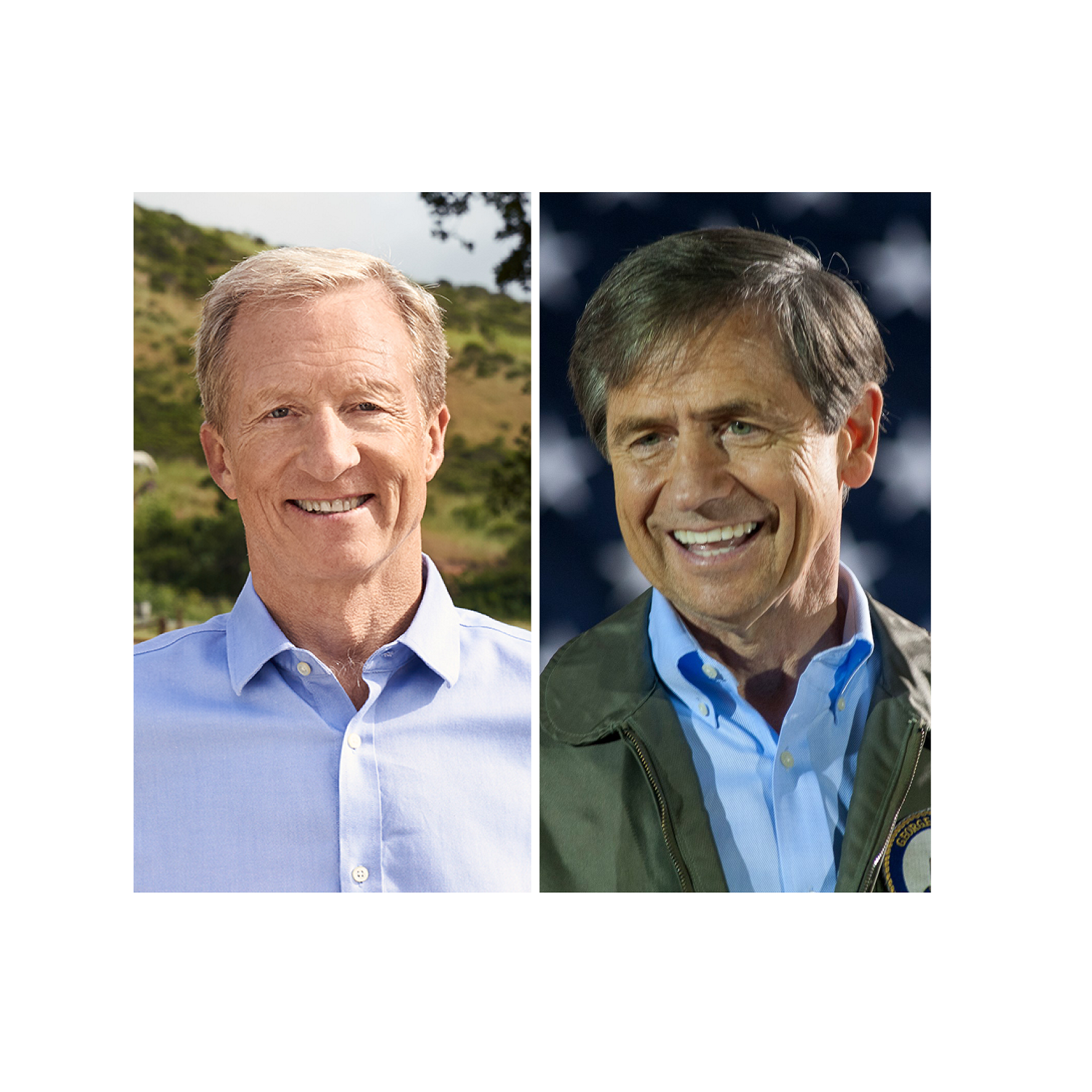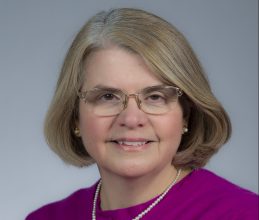
Two dozen candidates are now running for the Democratic nomination. While one candidate, U.S. Rep. Eric Swalwell, has withdrawn, two more have entered—business magnate Tom Steyer and former U.S. Rep. Joe Sestak.
This blog post will focus on two questions:
- Why is the Democratic field so large?
- Why have so many candidates entered rather late in the game?
Why such a large field?
The most obvious reason for the large and unwieldy size of the Democratic field is President Donald Trump. He is extremely unpopular among Democratic activists, and his national approval rating has remained consistently low, usually in the 40% range.[1] Presidential approval is one of the key predictors of success of the incumbent president party’s success in the next presidential election. Trump’s anemic approval rating signals that he is vulnerable.
A related reason, of course, is that the Democratic Party secured a majority in the U.S. House of Representatives after the 2018 midterm election. This too indicates that Trump is vulnerable, and Democratic voters are motivated and mobilized.
In addition, I believe that there are gender dynamics at play, as well. Political scientists Jennifer Lawless and Kathryn Pearson, in their analysis of congressional races, found that women candidates are more likely to attract both primary and general election challengers than similarly situated men are.[2] And the women candidates’ electoral competition is not just from men. When one woman is in the race, she is more likely to draw other women into the contest.
In spite of the fact that women are more likely to face primary challengers, Lawless and Pearson found that women are just as likely to be elected as men, meaning that women actually have to be stronger candidates to have similar outcomes.
Yet these findings suggest that women’s candidacies are just not sufficiently intimidating to keep others – men and women – from entering the race. The record number of candidates (24) and the record number of women (six) vying for the Democratic nomination are consistent with Lawless and Pearson’s findings at the congressional level.
Digging deeper – When did they announce?
However, let us dig a little deeper and look at the months that the candidates announced.[3] Selecting an announcement date is a strategic decision and can be a little tricky. Starting too early can be construed as a sign of weakness, since it tells potential voters and donors that one needs a lot of time to build name recognition and momentum. Conversely, starting too late may not afford a candidate enough time to raise money and campaign before the early contests. Independently wealthy candidates who are willing to finance their own campaigns may avoid the financial pressures of the “money primary,” yet they still have to compete for a dwindling number of uncommitted primary voters and caucus attendees.
Two candidates, Delany and Yang – both male and both relatively unknown – began their campaigns well before the 2018 midterm elections. The other 23[4] candidates announced between January and July 2019. All six women announced their candidacies in the first three months of 2019. Three announced in January (Gabbard, Harris and Williamson), two in February (Klobuchar and Warren) and one in March (Gillibrand).
Seven male candidates entered in the same three-month period: Booker, Castro, Hickenlooper, Inslee, Messam, O’Rourke and Sanders. The remaining ten candidates announced between April and July: Bennett, Biden, Bullock, Buttigieg, de Blasio, Moulton, Ryan, Swalwell, Sestak and Steyer.
While a great deal has been made of the diversity of the current field, here is an interesting fact: all the women and all the male candidates of color announced their candidacies before April 1.
The late entrants (April-July) are all white males, and with the exception of Pete Buttigieg, straight white males.
So what is going on here? How do so many white males, when confronted with a diverse, varied and well-qualified field,[5] decide that they have a shot to become president of the United States? How do they think they have a chance even though they are entering late and donors, television time, and key staffers may be committed to other candidates?
Two of these candidates have provided an explanation for their relatively late entry. Mayor Pete Buttigieg had been actively campaigning since January but he didn’t officially announce until April because he needed time to set up his official campaign committee. Sen. Michael Bennett delayed his announcement because he was treated for prostate cancer.
Presumably the remaining candidates believed that they could secure the nomination in spite of their relatively late announcements.
Here’s another interesting fact: most of the late entrants are unqualified by historical standards. In other words, they are not in the traditional pipelines to the presidency: vice presidents, governors and senators. The late entrants include two mayors, several current or former U.S. House members and a business magnate. None of these are conventional paths to the White House. Yet these under-qualified, late entrants somehow think they can overcome the disadvantages posed by late entry: low name recognition, a relative lack of experience and steep competition for donors and voters.
Again, I ask, what’s going on?
Implications
First, I do not think we can discount the possibility that some of these candidates do not actually expect to become the Democratic nomination. Rather, they may be in the race to shape the debate, put a favorite issue on the agenda, build name recognition and a national network for a future candidacy, position themselves as possible cabinet appointees or vice presidential pick, or sell books.
On the other hand, many of these people want to be the president of the United States. This begs the question: Do I think the (white male) late entrants entered as a result of blatant sexism or racism? Do I believe that any of these candidates woke up one morning and said, “Gee, there are a lot of women[6] (or men of color) in this race! Women (or men of color) are lousy candidates, so I think I should run and I can win.”?
Absolutely not. Indeed, the candidates in this race are certainly committed to civil rights and equality for all Americans and are not consciously racist, sexist or biased in any other way.
Rather, I think the dynamic is more insidious and due to unconscious bias. Women and men of color are often considered less qualified, even when their qualifications are identical – or better – than their white male competition. Numerous versions of the famous “names” study find that this is true.[7] Again, people are not even aware that they hold these biases and would probably be embarrassed or even horrified to learn that they harbor them.[8]
Instead, I think each individual’s thought process is something like, “Wow, this is a wide open race. I think I should get in it.” In other words, the presence of the women and the men of color, many of whom have impressive resumes, aren’t enough to dissuade their colleagues from entering the race.
I also do not want to discount the role of unconscious bias on the parts of the advisers, friends and colleagues who many have urged the late entrants to come into the race. They, too, discount the qualifications of the women and men of color in the race.
As noted in my June 19 blog post, potential women candidate’s “self-talk” is often negative. Women tell themselves they need to “know more” and “do more” before they run for office. The converse, then, is that men’s “self-talk” is that they “know enough” and “I can do this.” Some might call this self-confidence. Others may say it is hubris or privilege.
Whatever it is, we see it here in living color.
[1] Gallup Poll, “Trump Approval.” https://news.gallup.com/poll/203207/trump-job-approval-weekly.aspx.
[2] Jennifer Lawless and Kathryn Pearson. 2008. “The Primary Reason for Women’s Underrepresentation? Reevaluating the Conventional Wisdom.” Journal of Politics. 70(1): 67-82. This is based on a like-to-like comparison, i.e., comparing male challengers to female challengers, male incumbents to female incumbents, and male candidates in open seat contests to females in open seat contests.
[3] Data drawn from various news reports.
[4] This analysis includes Rep. Eric Swalwell, even though he has dropped out.
[5] For my analysis of candidates’ qualifications, see my June 17, 2019, blog post, “But is she qualified? Analyzing the resumes of the 2020 field.”
[6] Readers should note that I use the term “women” to include women of color who are candidates (i.e. Harris and Gabbard).
[7] See Corrine Moss-Racusin et al. 2012. “Science Faculty’s Subtle Gender Biases Favor Male Students.” PNAS. Accessed https://www.pnas.org/content/early/2012/0,9/14/1211286109.abstract as just one of many examples.
[8] Unconscious or implicit bias is well documented in academic research. To learn more, I recommend Harvard University’s Project Implicit: https://implicit.harvard.edu/implicit/takeatest.html.

Karen M. Kedrowski
Karen M. Kedrowski is the director of the Carrie Chapman Catt Center for Women and Politics at Iowa State University. Kedrowski previously served as the executive director of the John C. West Forum on Politics and Policy at Winthrop University where she also taught in the political science department and researched breastfeeding policy and breast cancer activism. She received her Ph.D. from the University of Oklahoma.